On last year’s Southeast Asia trip, our very first destination during our time in Borneo was the lowland dipterocarp forests of Sepilok. This region has a top view of the forest from one of the world’s largest canopy boardwalks in Rainforest Discovery Center. RDC is an Important Bird Area and holds most of the lowland Borneo bird gems within close reach. We conveniently stayed at Forest Edge (which is incredibly birdy itself — read about it here) for some days, so we could visit RDC several times.
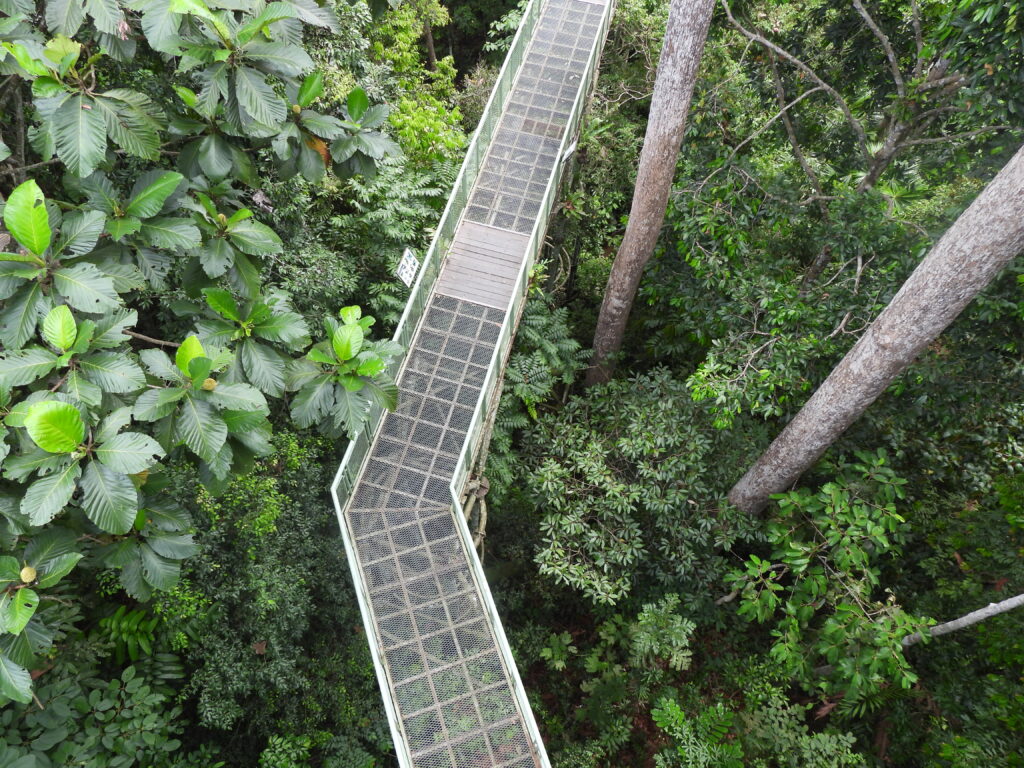
RDC can only be visited from 08:00 to 17:00 and the ticket costs MYR 30 for non-resident adults. The only way to be inside RDC out of that time slot is arranging visits with nature guides or with the center itself.
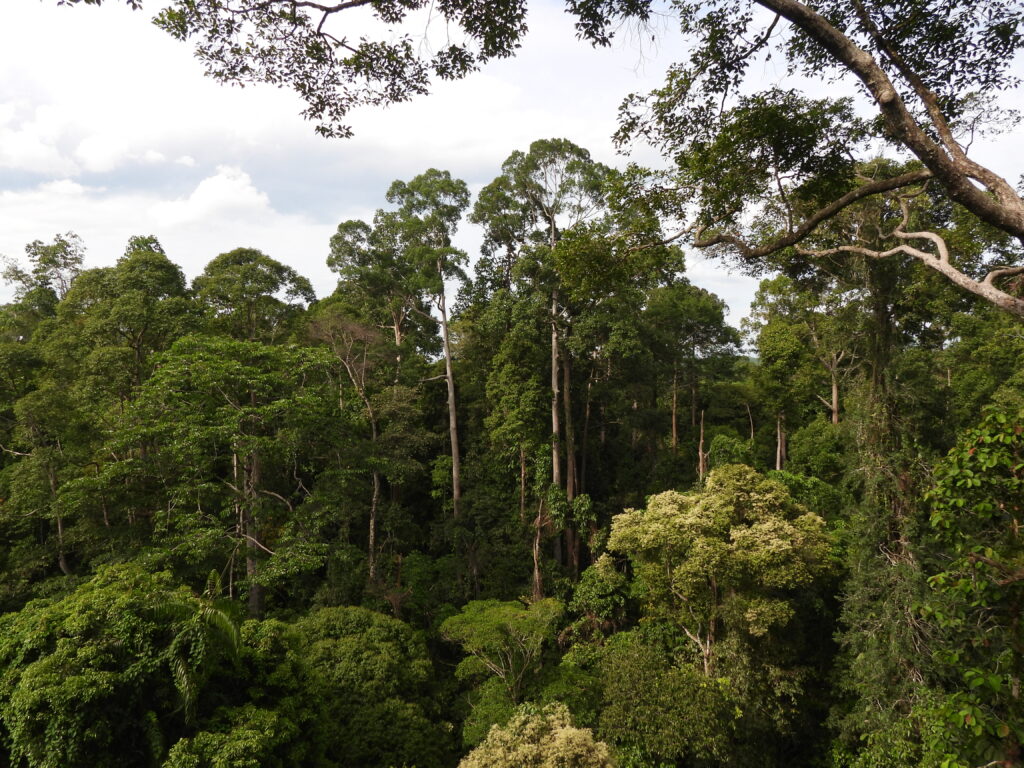
Our arrival was absolutely triumphant — right after getting in the boardwalk, at the first turn, we look at the birds of a fruiting tree. Among streaked bulbuls (Ixos malaccensis) and red-eyed bulbuls (Pycnonotus brunneus), we spotted a fine female jambu fruit-dove (Ptilinopus jambu), an extremely beautiful, uncommon, nomadic little dove which is widespread but quite scarce along the Malay Peninsula and Sundaland. We enjoyed this stunner for some minutes, clumsily moving between the branches after it disappeared in the tree.
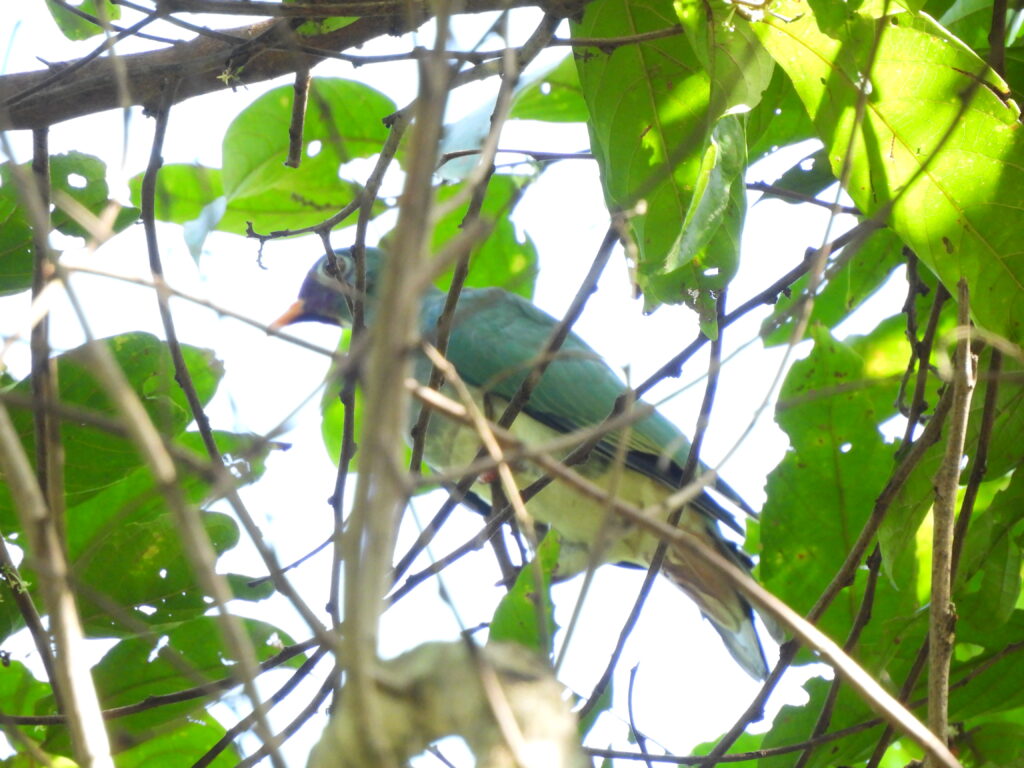
The whole boardwalk gives great perspective to the forest canopy, and numerous species that would have been distant otherwise become close in RDC. The fruiting season added up on the perfection of the site. Rhinoceros hornbills (Buceros rhinoceros), black hornbills (Anthracoceros malayanus), brown barbets (Caloramphus fuliginosus), green ioras (Aegithina viridissima), plain sunbird (Anthreptes simplex) or common hill myna (Gracula religiosa) could be seen at close distance. We even spotted one of the bonus birds, a ventriloquial oriole (Oriolus consobrinus), only found in Palawan and these forests. On the contrary, the narrow endemic, ground-dwelling black-crowned pitta (Erythropitta ussheri) could only be heard in the distance.

We encountered several birdwatchers in RDC throughout the morning, each with their own agendas and personal targets. Most of them happily shared what they had seen and where, even some guides. It was nice having the jambu fruit-dove as some sort of a “bargaining chip”, so that we could offer something in exchange — although the species might have not been an endemic or top target, it seemed to be awesome and scarce enough to be interesting for some.
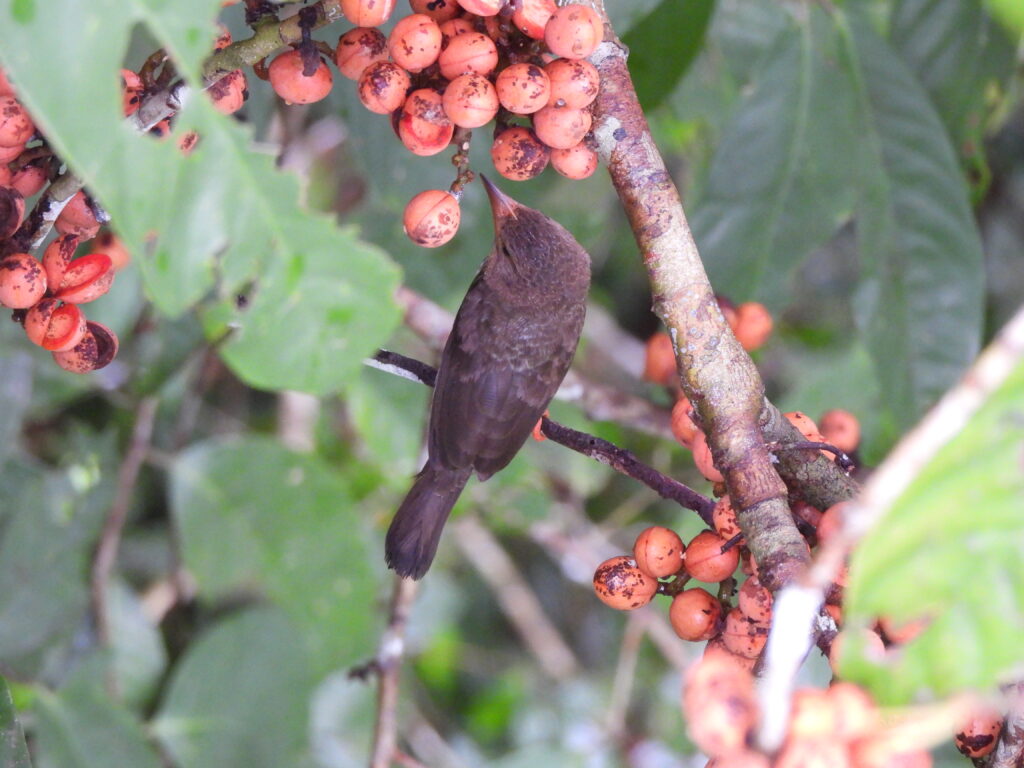
Some of these birdwatchers informed us about a Wallace’s hawk-eagle (Nisaetus nanus) nesting in a large tree just next to the hornbill tower, the tallest one and last in the boardwalk. As we walked up, an oriental honey-buzzard (Pernis ptilorhynchus) flew over. Then, the fine Wallace’s hawk-eagle showed up and sat on the brood at the nest, surrounded by some of the best views of the forest.
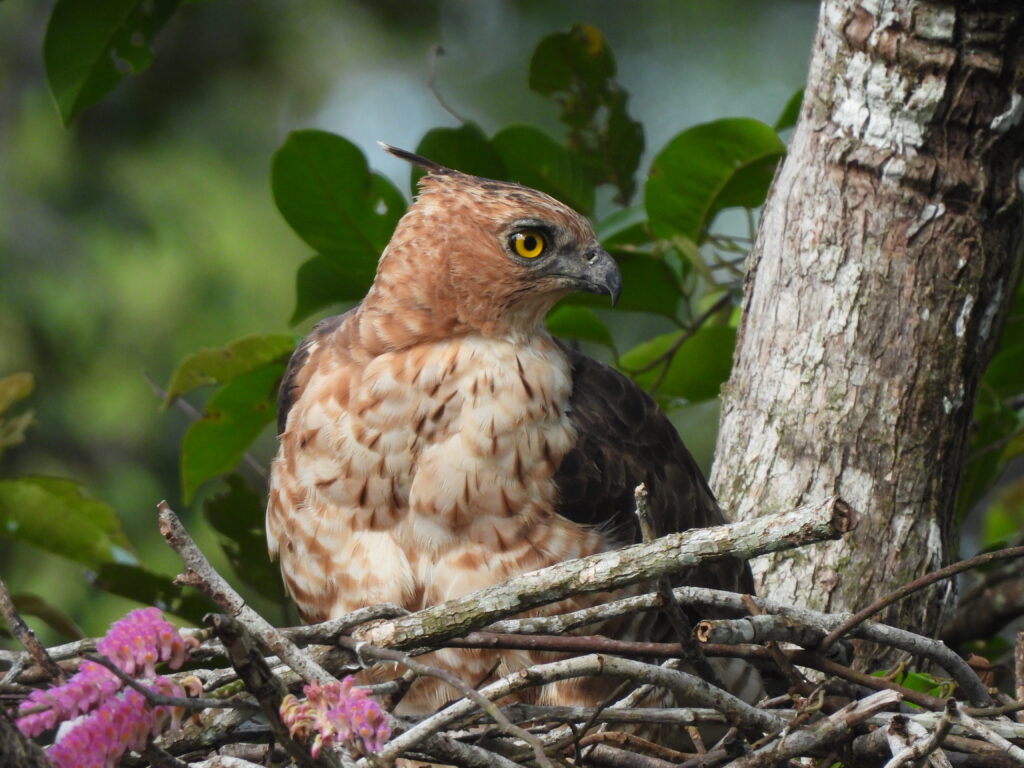
The boardwalk ended beyond that point. A couple of buildings were the starting point of a shorter boardwalk towards the broadbill tower. While we were looking at Raffles’s malkohas (Rhinortha chlorophaea) and purple-naped spiderhunter (Kurochkinegramma hypogrammicum), I noticed some distant noises on the trees.
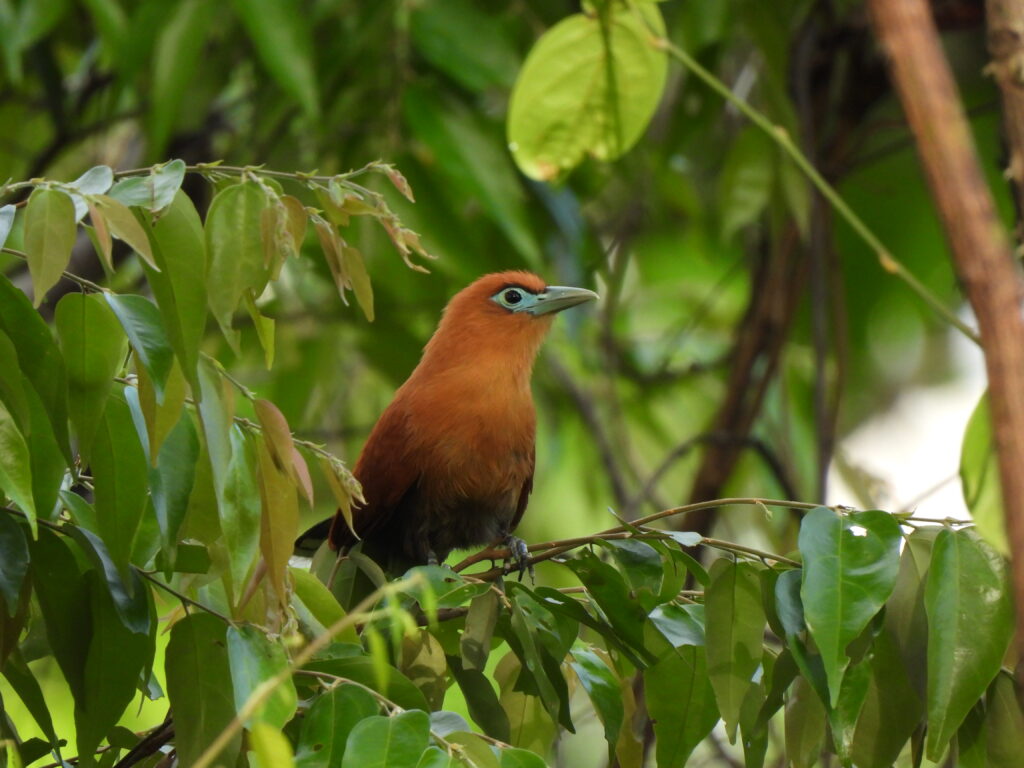
I quietly moved to a better viewpoint and found it. A young male Bornean orangutan (Pongo pygmaeus) climbing in the canopy, concealed in the dense trees. Incredible.
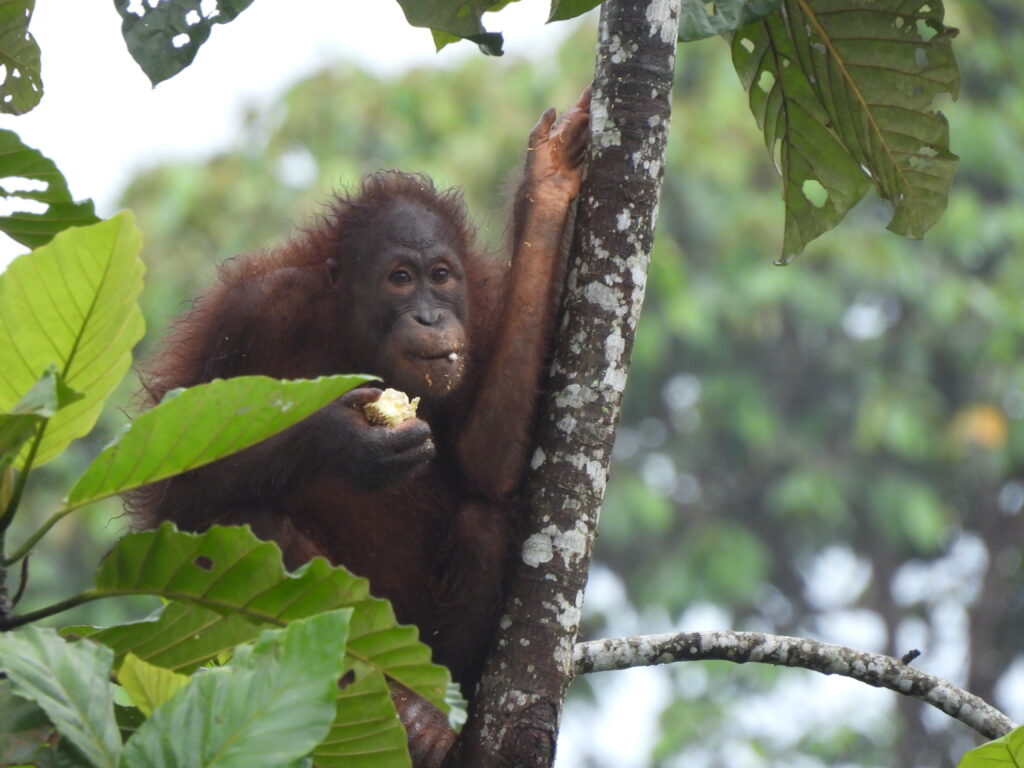
Bornean orangutan sights improved over the morning. It is incredible to see these ‘people of the forest’ (‘orang hutan’ in Malay) in the wild. A durian tree seen from the hornbill tower held several individuals feeding regularly, and we drew the attention of different tourists — for some, we had shown them their first-ever orangutans.
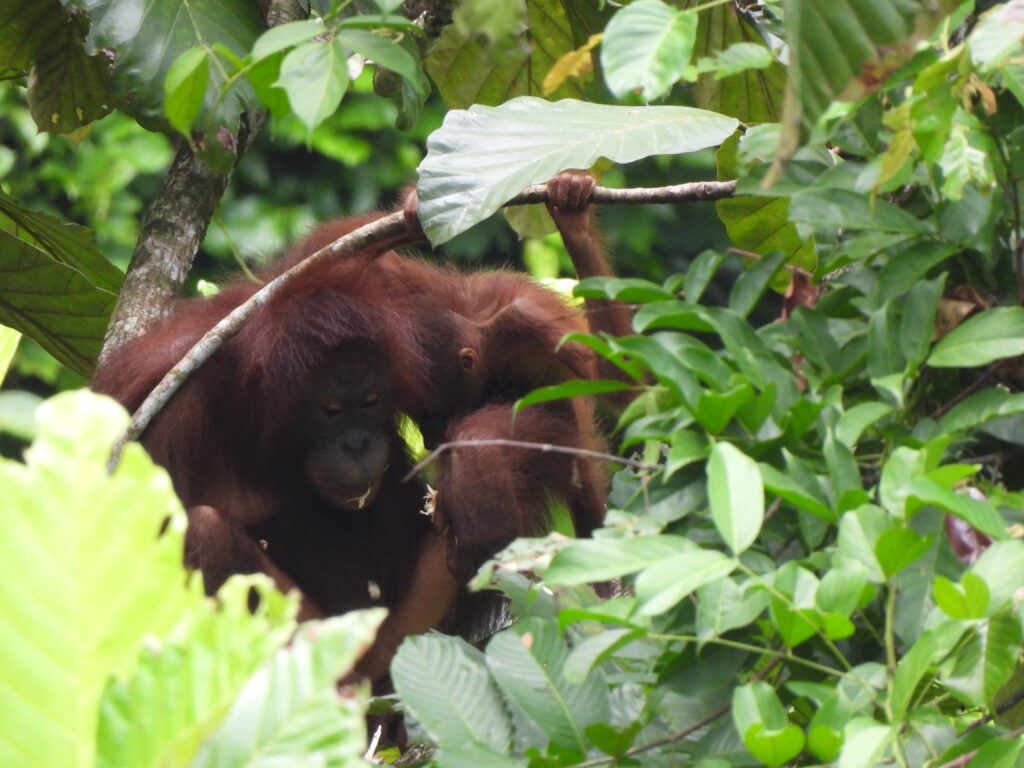
But then some orangutans would forage around the boardwalk, resulting in close-up views, long observations of their behavior and memorable encounters of lone individuals casually walking on the canopy walk structure. We thought of visiting the nearby Sepilok Orangutan Sanctuary to connect with these creatures in semi-captivity, but RDC provides the chance to connect with these fantastic people of the forest in the wild.
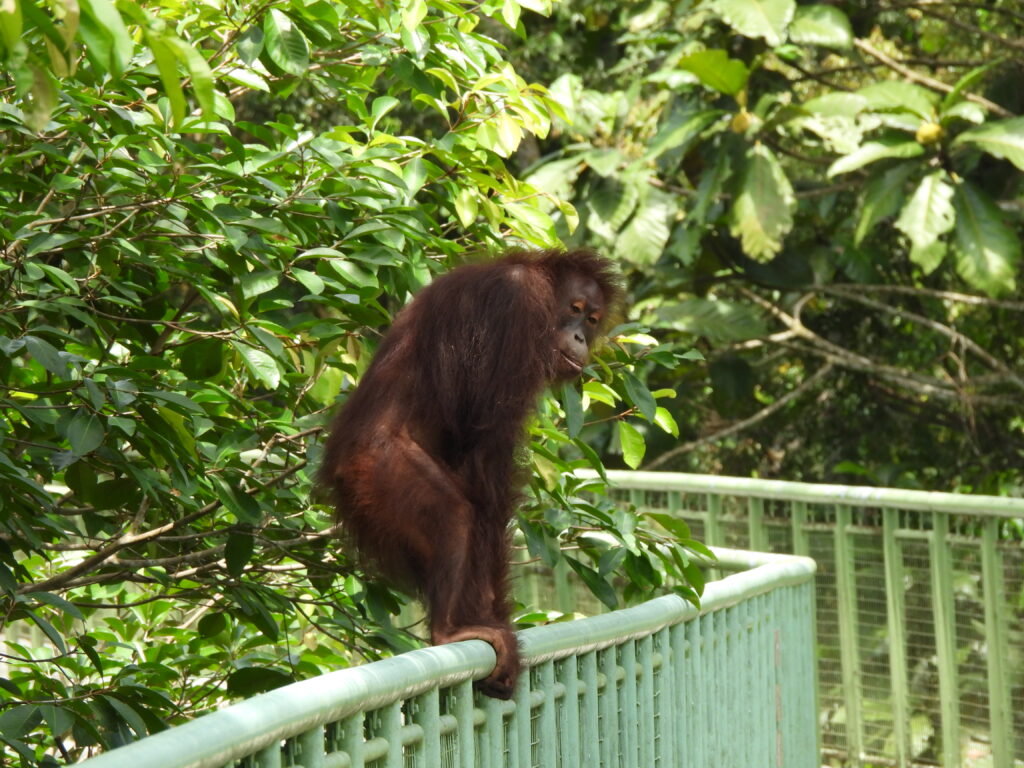
The bird activity drops during the hot midday, making for a good time to head to RDC restaurant, where food is affordable and delicious. We happily learned at lunch that another fellow birdwatcher managed to fetch the jambu fruit-dove down after a long wait later in the morning. In the afternoon and the following day, the local guide and bird photography enthusiast Mr Roberts Suban kindly guided us around.
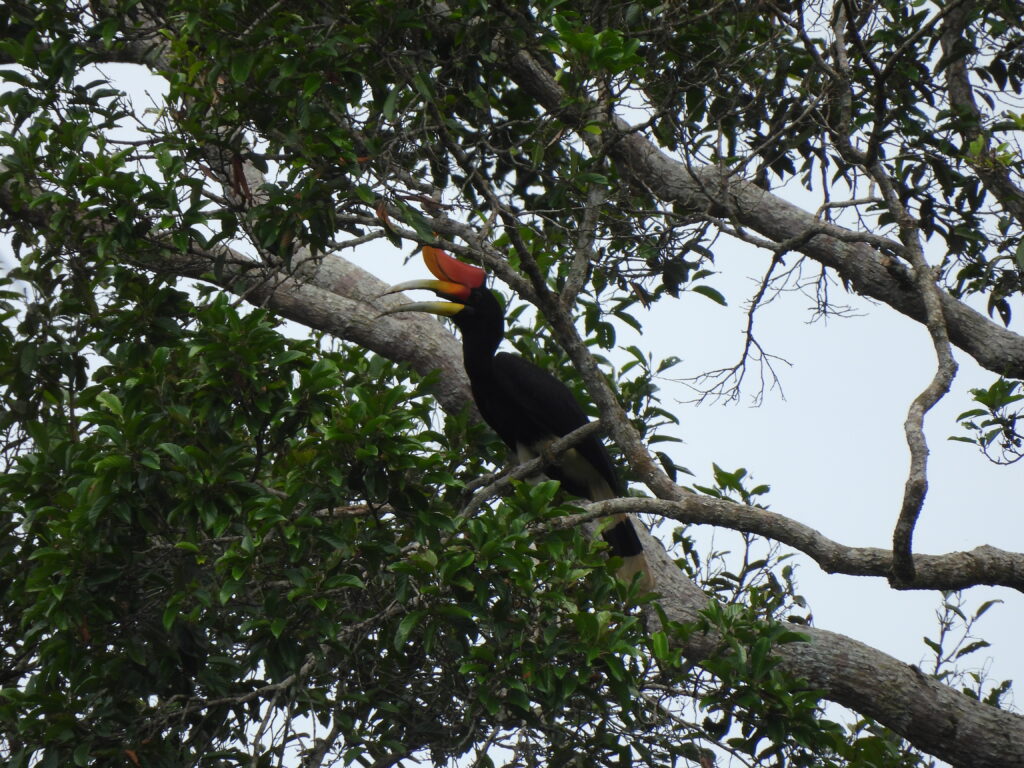
Roberts’s knowledge helped us connect with birds that we had been listening to in the morning. These include some targets, as black-and-yellow broadbill (Eurylaimus ochromalus), but also other unexpected, like a barred eagle-owl (Ketupa sumatrana) calling at daylight. However, we repeated some of the birds seen in the morning, as the same individuals roamed in the same trees. Additions included silver-rumped spinetail (Rhaphidura leucopygialis), white-nest swiftlets (Aerodramus fuciphagus) and plume-toed swiftlets (Collocalia affinis).
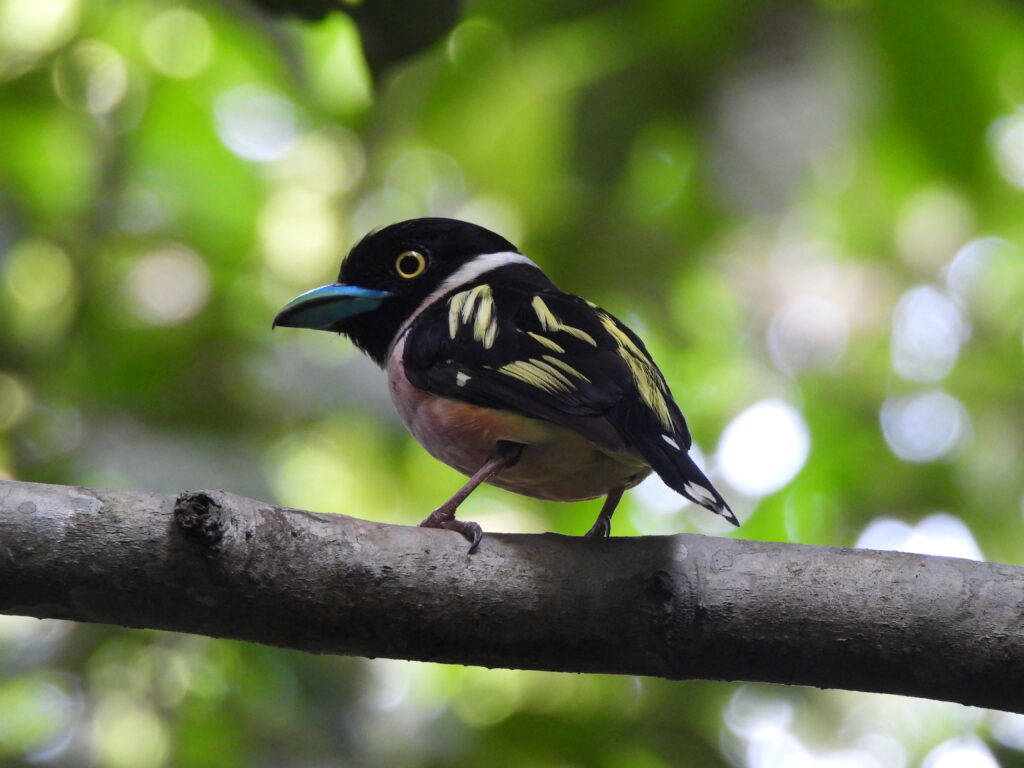
We stopped again at the broadbill tower, where another birdwatching group looked for birds. Buff-rumped woodpeckers (Meiglyptes grammithorax), rufous woodpeckers (Micropternus brachyurus), black-winged flycatcher-shrikes (Hemipus hirundinaceus), verditer flycatcher (Eumyias thalassinus) and blue-throated bee-eaters (Merops viridis) foraged more or less together.
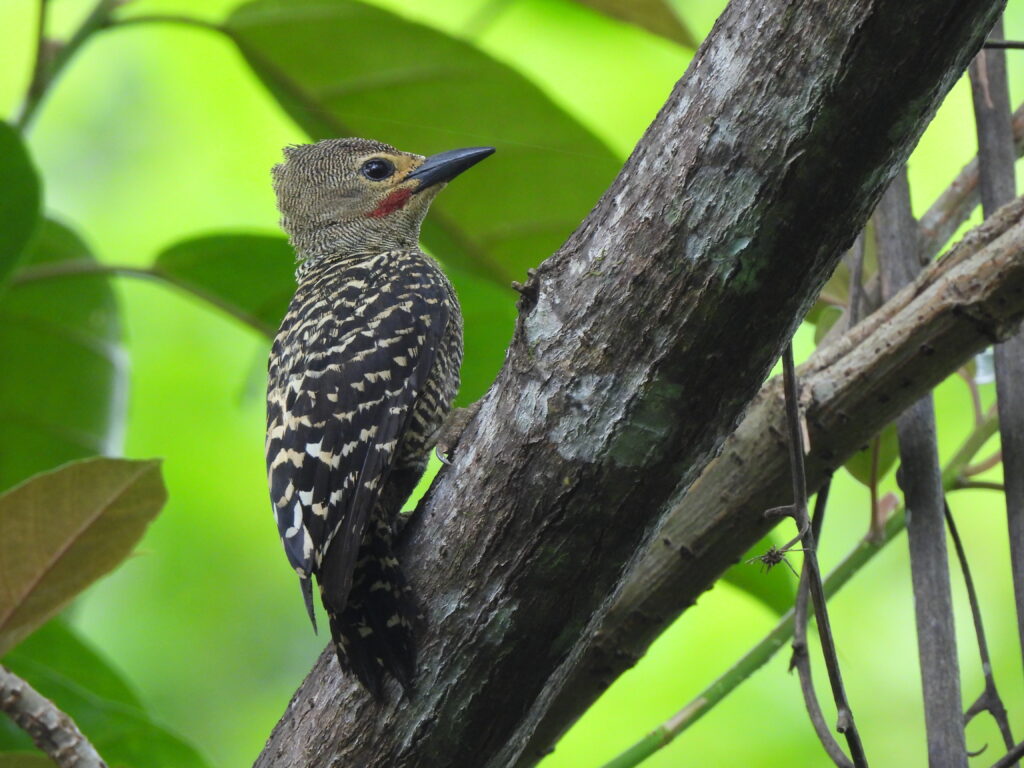
A walk inside the forest understory, down the boardwalks, yielded a calling rufous-backed dwarf-kingfisher (Ceyx rufidorsa). We reached an area in the pitta trail where several Sabah partridges (Tropicoperdix graydoni) foraged. These fowl are narrow endemics to the lowland dipterocarp forests of Sabah in northern Borneo, and were regularly fed by guides at certain spots of the trail. Their behavior was therefore extremely confiding. Besides the tame individuals, the loud calls of other birds resonated in the forest.
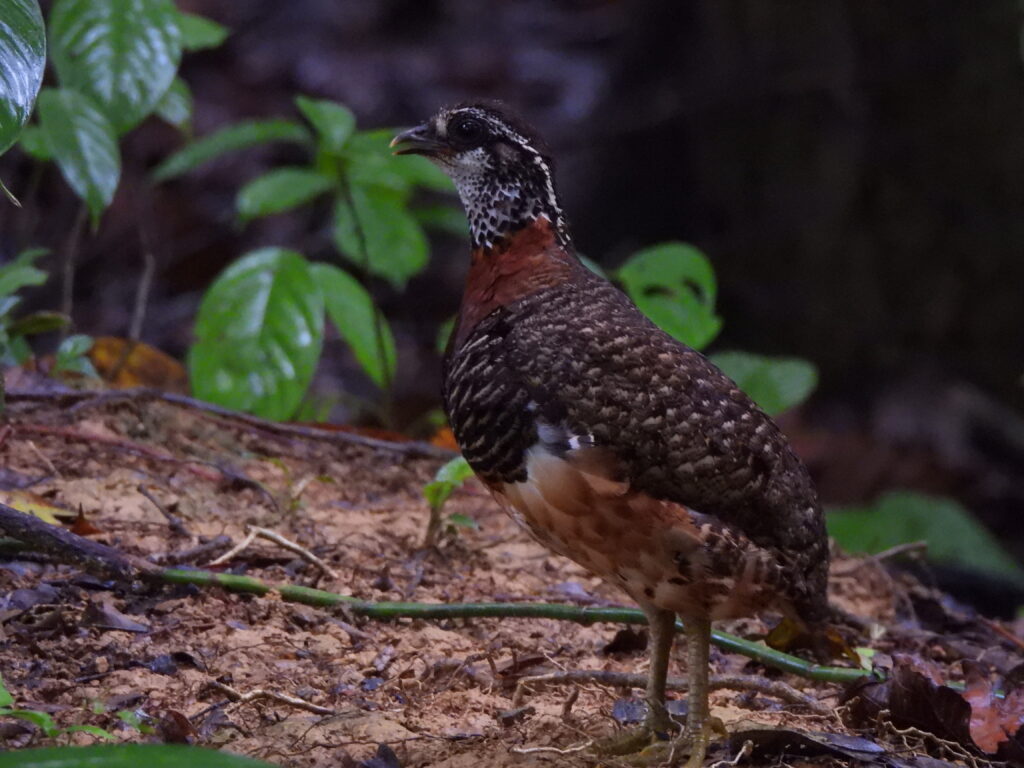
The following day, unfortunately, was far less birdy. The entrance lake provided oriental darter (Anhinga melanogaster) and gray-rumped treeswift (Hemiprocne longipennis). The jambu fruit-dove was nowhere to be seen but we instead bagged a spectacled bulbul (Rubigula erythropthalmos) and a gray-cheeked bulbul (Alophoixus tephrogenys). Other additions include ruby-cheeked sunbird (Chalcoparia singalensis), a black-and-yellow broadbill feeding a juvenile Indian cuckoo (Cuculus micropterus) and fiery minivets (Pericrocotus igneus) at broadbill tower.

A cracking rufous-backed dwarf-kingfisher finally showed up in the understory. We bagged a new endemic with a Bornean black magpie (Platysmurus aterrimus) showing off on top of a tree. Additionally, I managed to see and photograph a scarce passerine in the canopy near broadbill tower, the brown-streaked flycatcher (Muscicapa williamsoni) — among the few of its genus being resident along these latitudes.
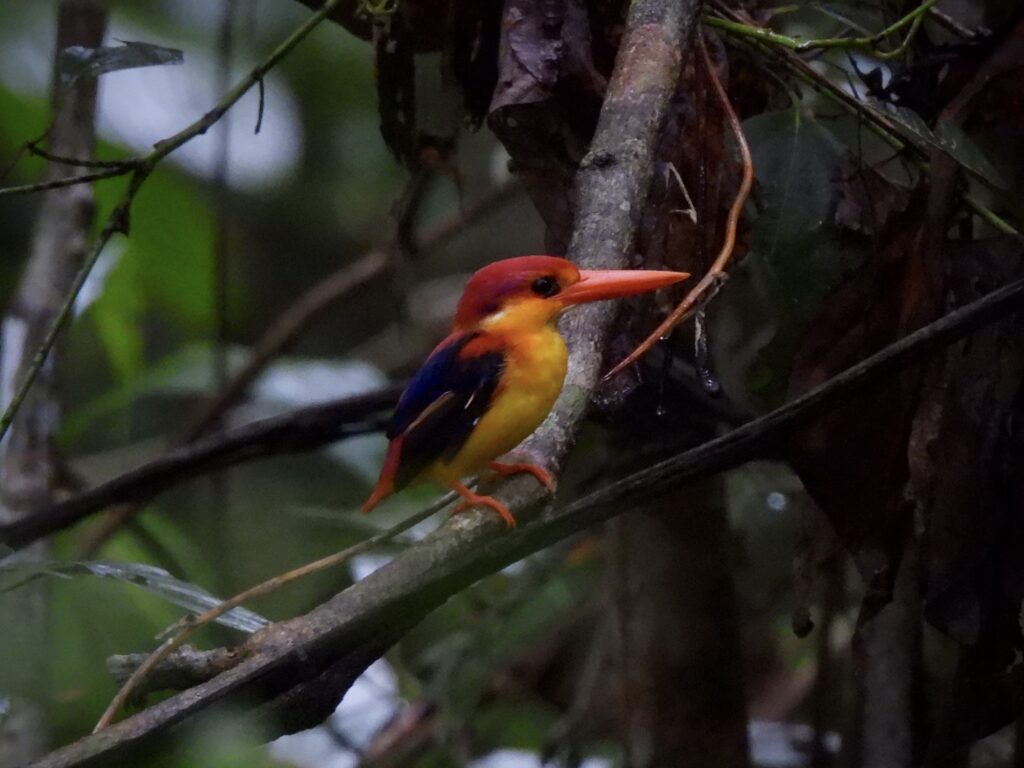
After a yummy lunch at RDC restaurant shared with a Chilean visitor which was keen to join us after showing her some orangutans, the three of us headed back to the forest. The afternoon focus was getting to see the endemic black-crowned pitta. Roberts had set a tape set and we sat for a long time until a fine bird obliged. The afternoon was particularly slow and I only added a little spiderhunter (Arachnothera longirostra) and a heard-only Bornean black-capped babbler (Pellorneum capistratoides).

After some two hours of waiting while hearing pittas calling very close, a stunning black-crowned pitta eventually showed up in the understory without stopping to call. The stunning plumage of this narrow endemic made the sight even more worth the wait, and the bird obliged with a couple of minutes of observation. It made me wonder whether the bird felt it was not being seen. In any case, a wonderful sight and the highlight of our time with Mr. Roberts.
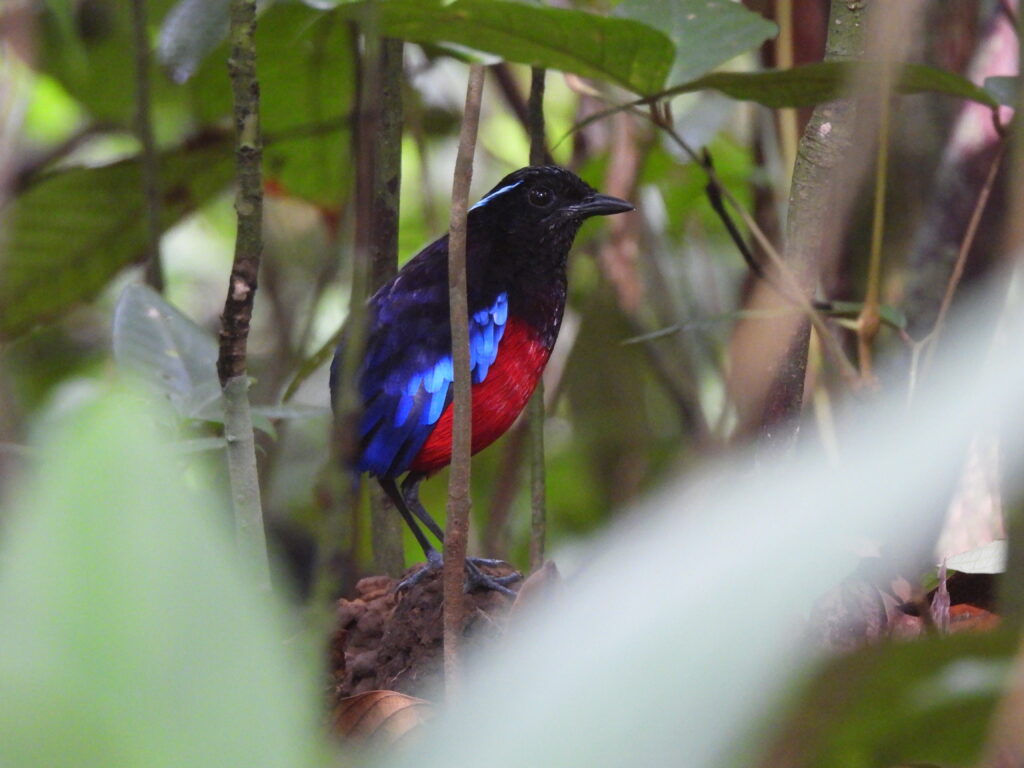
We walked back the canopy walk with Mr. Roberts in the afternoon. The views of the canopy are awesome, but some troops of long-tailed macaques (Macaca fascicularis) sometimes foraged on the way and he made very clear that it’s best to be careful when they are around. This time, however, we encountered a beautiful red giant flying squirrel (Petaurista petaurista) popping its head out of its roost.
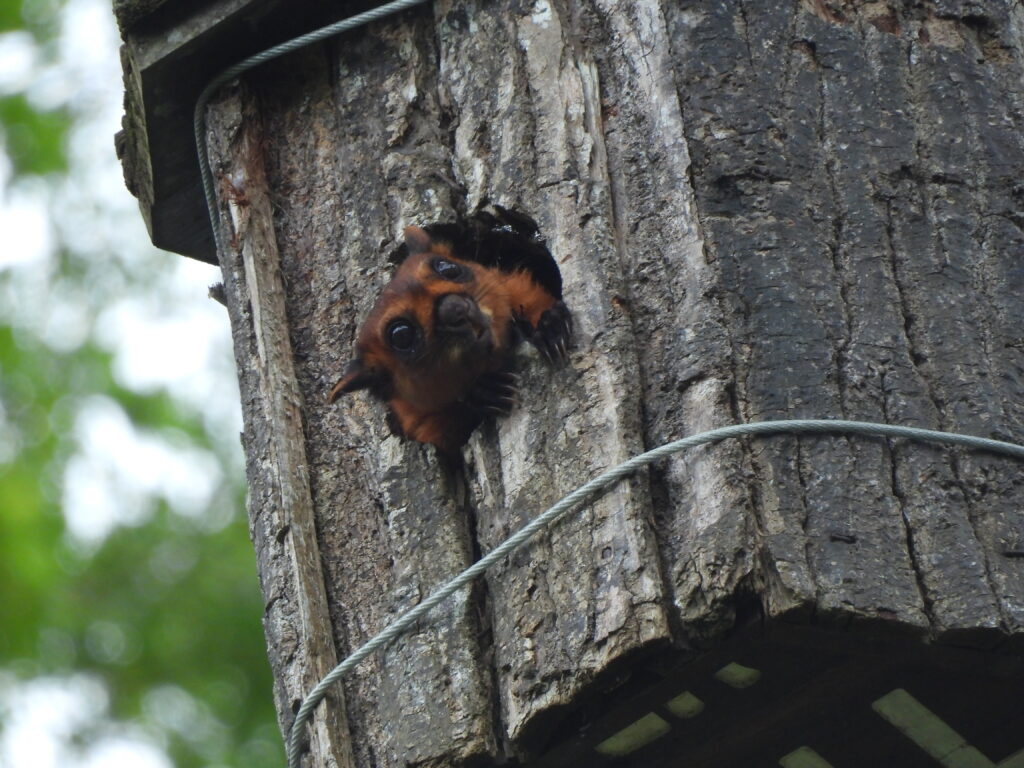
A great way to improve mammal watching in RDC is to join a night walk. We went on a night walk in RDC that day — in this case, organized by the center itself. These walks seem to be focused on some stakeouts well known by the guides. Our time slot, around 20:30, was seemingly best for lesser mouse-deer (Tragulus kanchil). Indeed, we saw different individuals crossing the paths in the distance, and eventually one foraging in the understory next to the trail.
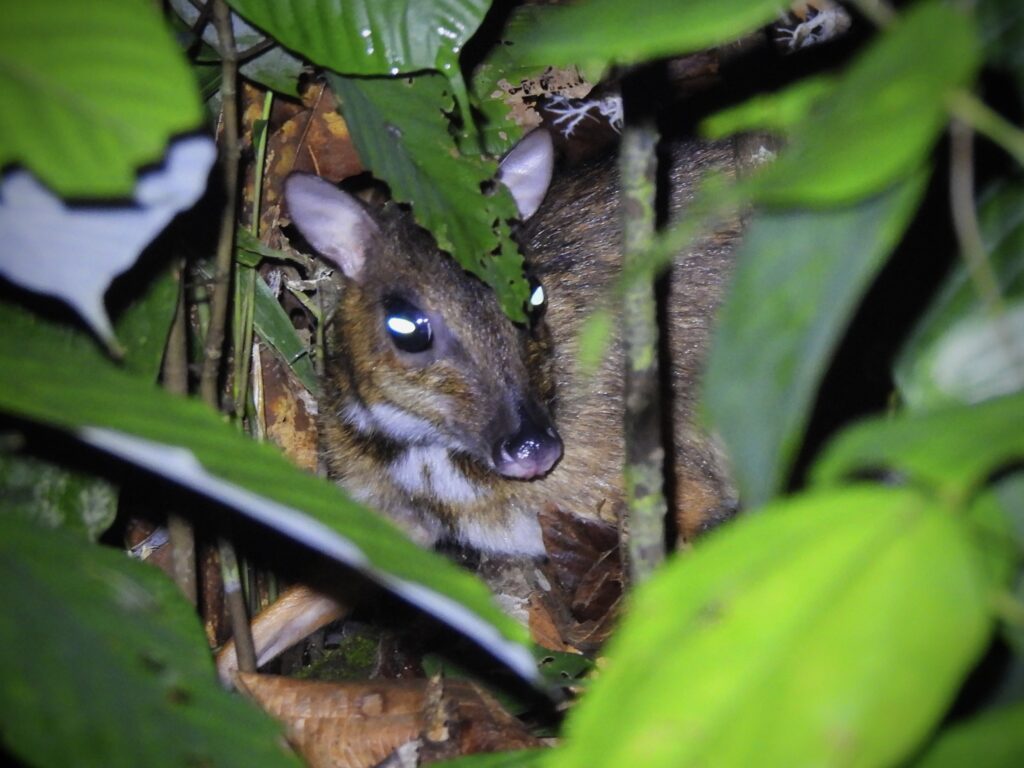
Tourists were pleased to see stick-insects, large spiders and a stunning Bornean keeled green pit viper (Tropidolaemus subannulatus). Some other groups managed to see other of the targets, the Horsfield’s tarsier (Cephalopachus bancanus). As sad as it was to know we missed, I was pleased that we got to see and enjoy what I think is the undoubted jewel of the night walk: a Philippine slow loris (Nycticebus menagensis) nimbly climbing the vegetation. What a stunner of a creature.
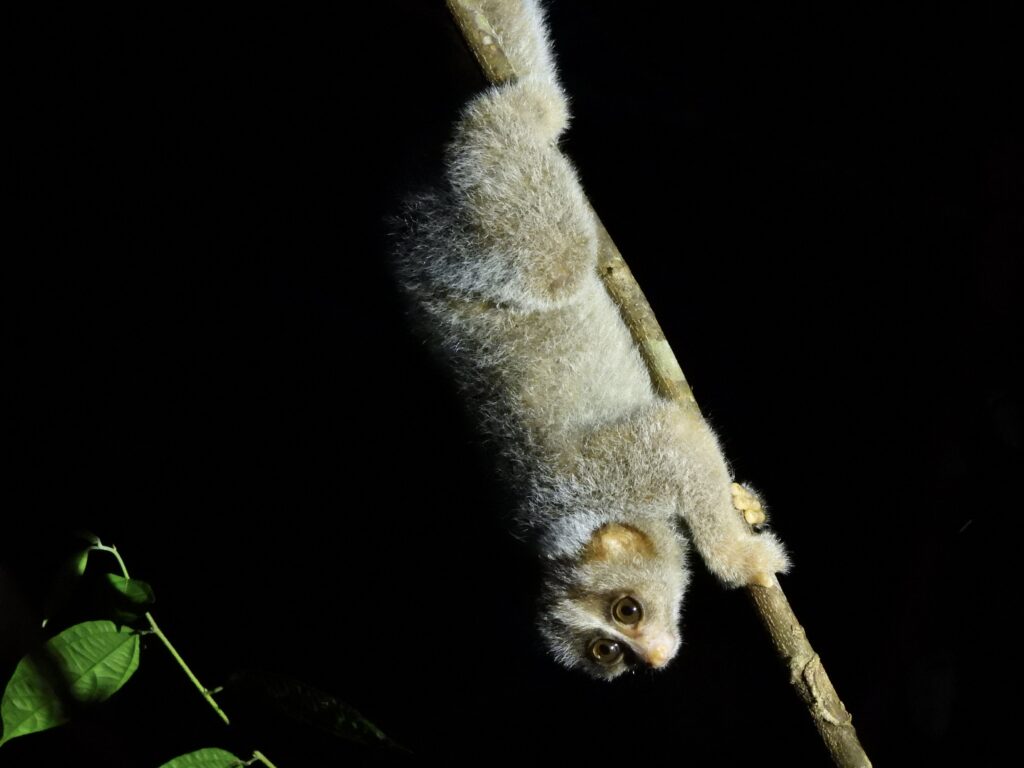
The lowland dipterocarp forests of northern Borneo hold an astonishing biodiversity and are among the last realms of the orang hutan, the people of the forest. The forests in southeast Asia, especially in Sundaland, are being lost at an alarming rate. The long-term stability of this ecosystem is in trouble, and may rely on conservation initiatives that showcase the value of these forests at a global scale.




